radical feminism for the proletariat. global warming impacts poor women the most & while we fight climate change & to care for the land, women's rights are being taken from both liberals & conservatives. women must focus on each other & unionize, grassroots organize, & fight for our, mother earth's, and girls' survival. change our culture and put ourselves first and live with and solely focus on supporting women, whether artists or family or strangers on the street. women before everyone. when women, especially indigenous women, thrive, so does the world. today's women are struggling, not thriving. let's live our lives to thrive, ladies. female only spaces are critical; try going to one (they often have scholarships & volunteer opportunities), creating your own, or supporting one. get active in your local liberal politics and push things, as Beyonce says, "TO THE LEFT TO THE LEFT." greatly interested in both land conservation and permaculture. rip out your lawns and plant native grasses flowers & food. ask me how to grow free food.
Don't wanna be here? Send us removal request.
Text
If you love Tree Law, the beloved subreddit is open again. I highly recommend sorting by top/all time.
12K notes
·
View notes
Text
https://law.justia.com/cases/connecticut/supreme-court/1965/152-conn-598-2.html
State v. McNally
Annotate this Case
152 Conn. 598 (1965)
STATE OF CONNECTICUT v. EDWARD MCNALLY (5693) STATE OF CONNECTICUT v. EDWARD MCNALLY (5694) STATE OF CONNECTICUT v. RICHARD MCALISTER (5695) STATE OF CONNECTICUT v. RICHARD MCALISTER (5696)
Supreme Court of Connecticut.
Argued April 13, 1965.
Decided May 25, 1965.
KING, C. J., MURPHY, ALCORN, COMLEY and SHANNON, JS.
*599 Harry H. Hefferan, Jr., for the appellant (defendant McNally) and Warren A. Luedecker, for the appellant (defendant McAlister), with them, on the brief, was Harold H. Dean.
Otto J. Saur, state's attorney, with whom, on the brief, were John F. McGowan and Joseph T. Gormley, Jr., assistant state's attorneys, for the appellee (state) in each case.
MURPHY, J.
Each of the defendants was charged in separate indictments with the crimes of murder in the first degree in the fatal shooting and stabbing of Richard McAlister's father on August 28, 1963, and for the fatal shooting of John Shinners on February 23, 1964, while the defendants were perpetrating a robbery. Since each defendant was seventeen years old at the time of arraignment, guardians ad litem were appointed for each of them, and, with the acquiescence of the state, a plea of *600 guilty to murder in the second degree to each of the crimes was accepted by the court. Each was then sentenced to life imprisonment in the state prison for each of the murders, the sentences to run consecutively. The defendants have appealed. Although they have stated their claims of error in several ways, the basic contention is that the court did not have the legal right to impose consecutive life sentences.
General Statutes § 53-11 provides that "[a]ny person who commits murder in the second degree... shall be imprisoned in the State Prison during his life." The use of this language presupposes a life sentence for each second-degree murder. In these cases, that penalty was imposed. The statutes are devoid of any language prohibiting the imposition of consecutive life sentences or of language requiring two life sentences to be served concurrently. "In the absence of statute, the determination whether two sentences to the same penal institution shall run concurrently or consecutively is an incident to the judicial function of imposing sentences upon a convict and is a matter for the determination of the court." Redway v. Walker, 132 Conn. 300, 306, 43 A.2d 748. The same principle applies to life sentences in murder cases. State v. Maxey, 42 N.J. 62, 69, 198 A.2d 768. In that case, the defendant was convicted by the jury of two separate and distinct murders in the first degree. The jury recommended life imprisonment instead of the death penalty. The court sentenced the defendant to life imprisonment on each count, the sentence on the second count to be served consecutively to that imposed under the first count. The defendant, upon appeal, advanced claims of illegality which bear striking similarity to those of the *601 defendants in our cases. The New Jersey Supreme Court affirmed the action of the sentencing judge and held (p. 69): "In the absence of a statute expressly prohibiting the sentencing judge from exercising such discretion, we find that the power to impose consecutive life sentences resides in the trial judge." Life sentences consecutive to other sentences have been upheld in In re Pedrini, 33 Cal. 2d 876, 882, 206 P.2d 699, and McCoy v. Severson, 118 Utah 502, 515, 222 P.2d 1058. The court had the authority to impose the sentences which it did in these cases, and there was no abuse of discretion in so doing.
At the time of sentencing the defendants, the court made some observations about the nature of the crimes, the personalities of the defendants and the doubt entertained by the court that the defendants would respond to medical and psychiatric treatment to the extent that they might be proper subjects in twenty years for parole under the provisions of General Statutes § 54-125. This statute permits the board of parole to release on parole an inmate of the state prison serving a life sentence after twenty-five years' confinement or after twenty years with maximum good conduct credits in prison. In other words, the court intended to and did put into the record its belief that neither defendant would merit parole in twenty years and therefore deemed it advisable to impose the consecutive sentences. The court went on to state that it did not necessarily feel that the defendants should be confined for forty years. Although it was not mentioned specifically, the court probably had in mind the jurisdiction of the board of pardons under General Statutes § 18-26.
Whether a sentencing judge, in determining the *602 proper sentence to be imposed, should take into account the possibilities of release on parole is a subject upon which there are conflicting views. It was approved in New Jersey in State v. Maxey, supra, 69, in which it was stated that the court could "conceive of no reason why a man who has been found guilty of two murders should necessarily receive the benefit of the same parole eligibility as a man who has committed only one murder" and it affirmed the action of the trial court as reported in State v. Maxey, 77 N.J. Super. 397, 406, 186 A.2d 536. In Morris v. Commonwealth, 268 S.W.2d 427, 428 (Ky.), in which consecutive life sentences were approved, the opposite view, that the sentence should be commensurate with the crime without regard to the possibility of parole, was espoused. Where, as here, the trial court had the authority to impose consecutive sentences, it could, in determining a proper sentence, consider all the mitigating and aggravating circumstances involved in the crime. State v. Smith, 5 Day 175, 179; 24B C.J.S. 578, Criminal Law, § 1983(1) (b). In addition, the court could also take into account the operative effect of the parole laws so far as they might have a bearing on the determination of a proper sentence under all of the relevant facts and circumstances. See 41 C.J.S., Homicide, § 436.
We find it difficult to follow the reasoning of the defendants that the sentences imposed upon them are in violation of article first, § 10, of the Connecticut constitution, which, as one of the declaration of rights, provides that "[n]o man shall be arrested, detained or punished, except in cases clearly warranted by law." That section is wholly concerned with safeguarding the rights of persons charged with crime. Cinque v. Boyd, 99 Conn. 70, 94, 121 A. *603 678. It would be preposterous to hold that a person who commits a crime has a constitutional right to escape punishment for it. As already stated, in the absence of statutory restriction, the punishment inflicted is clearly warranted by General Statutes § 53-11, which directs life imprisonment for each second-degree murder committed.
The final argument advanced by the defendants is that the sentences constitute cruel and unusual punishment, which is prohibited under the eighth amendment to the federal constitution. When the objection is to the sentence and not to the statute under which the sentence was imposed, the sentence is not cruel or unusual if it is in conformity with the limit fixed by statute. When the statute does not violate the constitution, any punishment which conforms to it cannot be adjudged excessive since it is within the power of the legislature and not the judiciary to determine the extent of the punishment which may be imposed on those convicted of crime. The imposition of life sentences to run consecutively for two second-degree murders is neither excessive nor cruel and inhuman punishment. Chavigny v. State, 112 So. 2d 910, 915 (Fla. App.), cert. denied, 114 So. 2d 6 (Fla.), cert. denied, 362 U.S. 922, 80 S. Ct. 676, 4 L. Ed. 2d 742; see also Lindsey v. United States, 332 F.2d 688, 692 (9th Cir.); Anthony v. United States, 331 F.2d 687, 694 (9th Cir.); Boerngen v. United States, 326 F.2d 326, 329 (5th Cir.); Pependrea v. United States, 275 F.2d 325, 329 (9th Cir.). As the sentences imposed did not exceed the permissible statutory penalties, the punishment cannot be held to be cruel and unusual as a matter of law. State v. Levy, 103 Conn. 138, 148, 130 A. 96.
There is no error.
In this opinion the other judges concurred.
0 notes
Text
Can't afford to buy things for your garden?
*Re-posting, with new information
A store-bought bag of topsoil, a roll of landscaping fabric, or a bag of cedar chips doesn’t go very far if you have a large garden or a very limited budget. Here are some ways to create the materials you need for a beautiful, organic, productive garden, by both re-directing household waste, and foraging in your local area. I use a lot of these tricks in my garden to make it almost completely free for me to continue growing new things, and expanding the workable area every year!
For soil
Save your food scraps to create a rich compost for growing veggies and amending your soil. There are numerous options for every size of dwelling and yard. Small space solutions such as Bokashi and vermicompost work indoors and don’t produce bad smells, so you can keep them underneath the sink.Worm towers, compost heaps, and outdoor compost bins are a great solution if you have more space. The more you add, the more rich, nutritious material you can make for your garden. I like composting because it means I don’t have gross smelly garbage bags to deal with, because food waste is diverted. It seems like a lot of work at first, but it actually saves time, money, and transportation.
Seaweed or kelp is one of the best things for your garden, with over 70 essential nutrients, and acting as a weed barrier and a moisture-retentive mulch. I collect seaweed nearby on the beach with my bike trailer, or, when I go for a walk I bring a little home with me each time. It’s an absolute miracle for your soil.

Worm tower
Fertiliser
There are three things that are essential for plant growth. These are nitrogen for leaves and vegetation (N), phosphorus for roots and shoots (P), and potassium for water movement, flowering, and fruiting (K). Commercial fertilisers will give the relative concentrations of each of these compounds with and “NPK” rating. Plants like tomatoes also need calcium to produce healthy fruit. You can create amendments for your garden and soil at home so that you do not have to purchase fertiliser.
For nitrogen
Grass clippings contain 4% nitrogen, 1% phosphorus, and 2% potassium (NPK = 4-1-2).
Human urine contains 12% nitrogen, and it’s sterile. Dilute before adding directly to plants.
Legumes such as beans, clover, peanuts, and alfalfa fix inorganic nitrogen into the soil with mycorrhizal organisms and nodules on their root systems. Plant these crops every few years in rotation with others to renew the soil organically.
For phosphorus
Human urine is also a great source of phosphorous and trace amounts of potassium.
Ground up bones or shells add a slow-release phosphorous to the soil
Had a baby recently? Bury the placenta in the garden.
For potassium
Hardwood ashes
Composted banana peels
For calcium
Break down all of your eggshells, or seashells you have found, in a plastic bucket, using vinegar. This creates a soluble calcium solution you can add to a watering can.
Soil Acidity/Alkalinity
Many plants are particular about what the soil pH should be.
To make soil more acidic: add oak leaves, pine needles, leaf mulch, urine, coffee grounds or sphagnum.
To make soil more alkaline: add wood ash, shell, or bone.
Mulch
Mulch is decomposing organic matter that adds nutrition to the soil, while simultaneously keeping out weed growth and retaining moisture. It also attracts worms, fungi and other beneficial creatures to your soil. Free sources of mulch include:
Leaves
Garden waste
Grass clippings
Straw (often straw bales are given away after being used for decoration in the fall. You can also plant vegetables directly in straw bales using a technique called straw bale gardening).
Wood chips (if you can borrow a wood chipper after you’ve collected some wood you can have attractive wood mulch for free)

Straw bale garden
Landscaping fabric
When mulch isn’t enough to keep the weeds down, many people opt for landscaping fabric. It can be quite expensive and inorganic-looking. Free solutions that both attract worms and can be replaced in small segments as they break down include:
Newspaper*
Cardboard*
Egg cartons*
Printer paper, looseleaf, etc. in thick layers*
*try to make sure you are using paper that has vegetable-based dyes, so you aren’t leeching toxins into the soil.
Soil density/drainage
If your soil is compacted and you have plants that require low levels of water, or excellent drainage, add sand. I don’t recommend stealing it from the beach, but ask around and you’d be surprised at how easy it is to get for free. Sawdust also improves drainage. Adding organic matter and mulch encourages worms, who also till and aerate compacted soil.
If the area still needs drainage, dig a hole and fill it with bricks or rocks to create a “dry well”
For drainage in pots, add crushed bricks, terra cotta pot fragments, packing peanuts, small stones, marbles, orsand to the bottom under the soil layer. I find these in construction sites, on craigslist, or at flea markets.
Pots and growing containers
If you have space, raised beds are a great no-dig way to establish growing space. If you are pressed for space (like working on a balcony) there are many cheap or free options for container gardens.
Creating raised beds allows you to build up the soil without digging. Free ways to do this include using rocks or lumber (like my DIY “lasagna garden” made with the sheet composting technique), using the “wattle“ method with sticks and posts you have found, using discarded straw bales, old bricks,paving stones, cinder blocks or really anything else you have lying around.
Hugelkutur raised beds, which fix carbon and provide drainage, can be made by stacking sticks and untreated wood, and then piling soil or compost over it. (Thanks milos-garden)
Rubber tire gardens retain heat in the night and allow for great drainage. They can also be painted in fun ways.
Herb spirals (here is mine: 1, 2, 3) can be built with stones, bricks, and other found materials.
I often use old cooking pots, barbecues, teapots, or other found objects as planters.
Making wooden planters is easy, and scrap or salvaged wood is also easy to come by. I’m not a fan of using wooden pallets for DIY projects, but they are also a free source of lumber for things like planters.
If you can track down peat moss, cement, and vermiculite, you can make an easy Hypertufa planter in whatever shape you would like, provided you have a form in which it can dry.
I’ve made hanging gardens out of soda cans.
You can build a self-watering container with a 2L pop bottle.
Start seeds in eggshells
Make biodegradable pots out of newspapers.
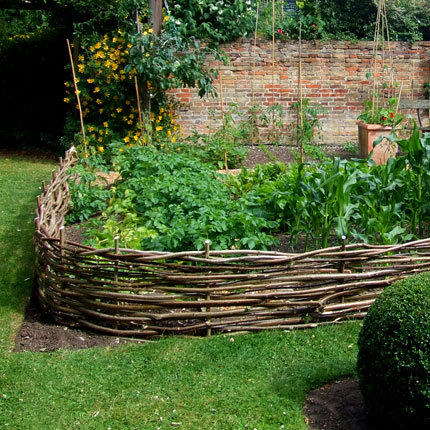
Wattle raised beds

Rubber tire gardens

Hugelkultur

An herb spiral
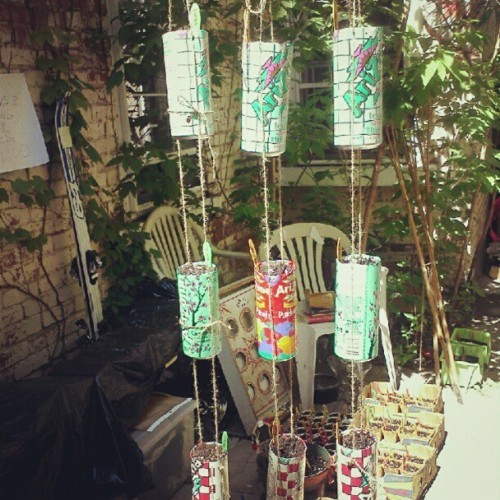
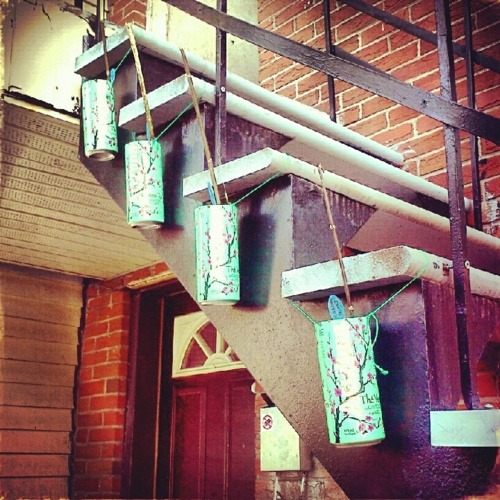
Hanging gardens in cans (2)
Trellises and supports
Many plants need external support, such as stakes of trellises, to thrive.
Rebar can almost always be salvaged cheaply or free and makes a great trellis, arch, or purgola
Build trellises and supports out of the pliable young stems of plants like willow
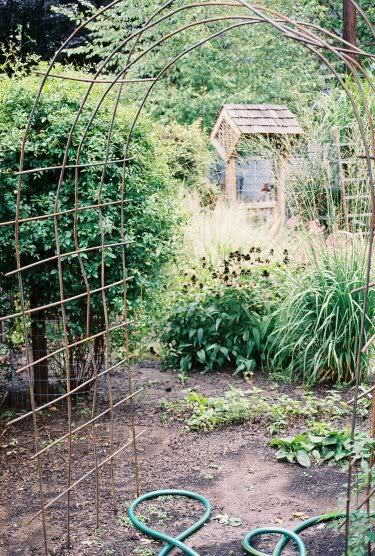
Rebar trellis/arch

Living willow arch/trellis
Paving
Paving often requires a foundation of sand or another stable and well-drained substrate, and a covering of stones, bricks, or other weatherproof elements. Slowly collect stones over time, or free paving stone fragments to create a mosaic-type walkway. Often people give these things away on craigslist. I made a patio and fireplace out of free salvaged bricks, for example.

Salvaged garden walkway
Greenhouses and cold frames
Here is a gallery of greenhouses made out of salvaged windows and doors
A cold frame is easy to make with salvaged lumber, and plastic sheeting.
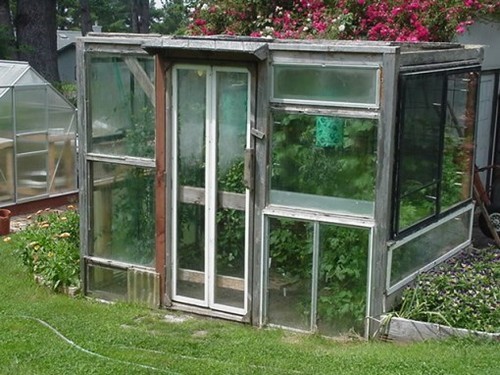
Window greenhouse
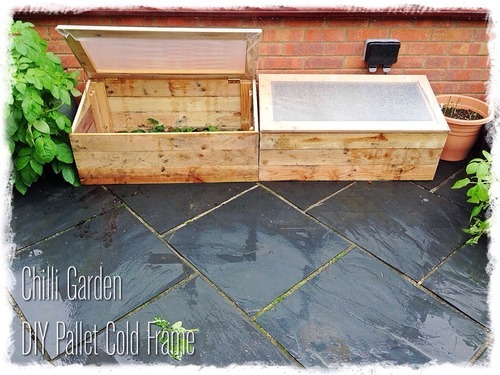
Palet cold-frame
Seeds and plants
Swap seeds with other gardeners
If you see a plant you like at someone’s house, ask for seeds or cuttings
Save seeds every year and build a library of options. Here is a great guide to seed saving.
Save seeds from foods you like from the grocery store: consider growing peanuts, ginger, garlic, peppers, or a walnut tree: all of these and more can be planted from store-bought produce.
Learn to take cuttings. There is a tonne of info on the web about basic cutting propagation, layering, (like I do with rhododendrons) air layering, and numerous other techniques to take clones of plants you like. This saves going to a nursery and shelling out big bucks for all the variety you want.
For cuttings, willow tea and honey are great rooting hormones/antiseptics/anti-fungal agents, which can save you $40 if you were thinking of buying commercial rooting hormone.
You can root cuttings in a potato! (See my methods for rooting “borrowed” plants here)
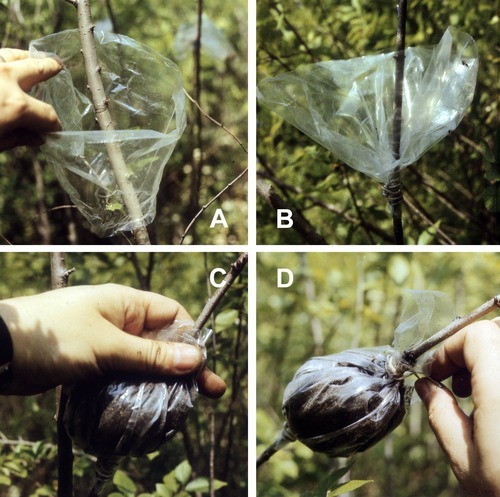
Air layering
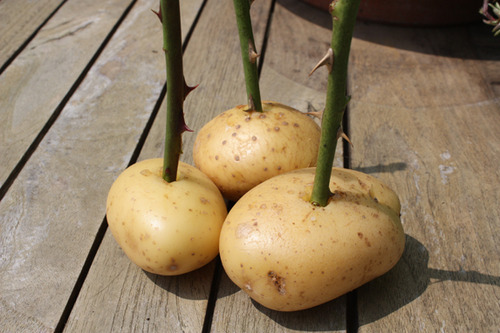
Rooting cuttings in potatoes
—-
I hope this helps you build your garden outside of the usual capitalist channels! It can be a cheap or free hobby if you are willing to think outside the box, and maybe put up with things that don’t look as clean or crisp as a hardware store catalogue. If you have any further ideas, please add them! The more information the better.
#gardening#garden#food#farming#farm#diy#how to#easy#cheap#materials#building materials#save money#reference#ref#long post#cloning#clone#plant cloning#cutting#cuttings#container gardening#container#acidity#alkaline#acidic#soil#mulch#fertilizer#phosphorus#nitrogen
43K notes
·
View notes
Text
Reminder for those doing tricky forms of feminist or LGBT-related activism or writing about controversial topics (including under threat of censorship or violence) that the Electronic Frontier Foundation has some excellent resources for maintaining electronic and internet security and privacy, including a set of documents covering issues you might need to know under certain common scenarios (such as being an LGBT youth, doing sensitive activism, or skills needed if you’re a journalist). It covers mundane topics like choosing a secure password, communicating safely with others, and securing your social media profiles up to very serious ones, such as circumventing government surveillance or censorship tools and strategies for combating police searches and seizures of electronic property. Their recommendations are highly useful no matter what you’re doing; please check them out, especially if you’re interested in doing serious political planning or publishing.
272 notes
·
View notes
Text
I found this lovely video on Facebook this morning. It shows you how to regrow various fruits and veggies.
#how to#garden#food#fruit#vegetables#self sustainability#tomato#carrot#watermelon#seed#seeds#gardening#farm#farming#sun#plant#planting#water#diy#cheap#easy#save money#video#cuttings#cloning#plant cloning#eat#hunger#container#container gardening
22K notes
·
View notes